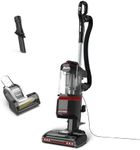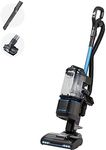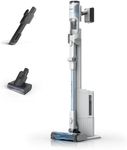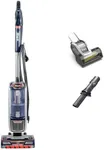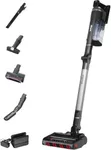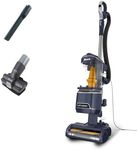Buying Guide for the Best Shark Vacuum Cleaners
Choosing the right Shark vacuum cleaner can make a significant difference in maintaining a clean and healthy home. Shark offers a variety of models, each designed to cater to different cleaning needs and preferences. To find the best fit for you, it's essential to understand the key specifications and how they align with your specific requirements. Here are the main specs to consider when selecting a Shark vacuum cleaner.Type of VacuumShark offers several types of vacuum cleaners, including upright, stick, handheld, and robotic models. The type of vacuum is important because it determines the vacuum's suitability for different cleaning tasks. Upright vacuums are great for deep cleaning carpets and large areas, stick vacuums are lightweight and easy to maneuver, handheld vacuums are perfect for quick clean-ups and tight spaces, and robotic vacuums offer automated cleaning with minimal effort. Choose the type based on the primary areas you need to clean and your preference for manual versus automated cleaning.
Suction PowerSuction power indicates how effectively a vacuum can pick up dirt and debris. This is crucial for ensuring thorough cleaning, especially on carpets and rugs. Suction power is often measured in watts or air watts. Higher suction power is better for deep cleaning and picking up larger debris, while lower suction power may suffice for hard floors and light cleaning tasks. Consider your flooring type and the level of dirt in your home to determine the appropriate suction power.
Filtration SystemThe filtration system in a vacuum cleaner helps trap dust, allergens, and other particles, preventing them from being released back into the air. This is particularly important for households with allergy sufferers or pets. Shark vacuums often feature HEPA filters, which are highly effective at capturing small particles. Look for models with HEPA filtration if air quality is a concern, or opt for standard filters if you have no specific allergy issues.
Dustbin CapacityDustbin capacity refers to the amount of dirt and debris the vacuum can hold before needing to be emptied. A larger capacity means less frequent emptying, which is convenient for larger homes or extensive cleaning sessions. Smaller capacities are suitable for quick clean-ups or smaller living spaces. Consider how often you want to empty the dustbin and the size of the area you typically clean to choose the right capacity.
Corded vs. CordlessCorded vacuums offer continuous power and are ideal for long cleaning sessions without worrying about battery life. Cordless vacuums provide greater mobility and ease of use, especially for quick clean-ups and hard-to-reach areas. However, they require recharging and may have limited run time. Decide based on your cleaning habits and whether you prioritize convenience and mobility over uninterrupted power.
Weight and ManeuverabilityThe weight and maneuverability of a vacuum cleaner affect how easy it is to use, especially for extended periods or in multi-level homes. Lighter vacuums are easier to carry and maneuver, making them suitable for quick clean-ups and homes with stairs. Heavier models may offer more power and larger capacities but can be cumbersome to move around. Consider your physical strength and the layout of your home when choosing the right weight and maneuverability.
Attachments and AccessoriesAttachments and accessories enhance the versatility of a vacuum cleaner, allowing you to tackle various cleaning tasks. Common attachments include crevice tools, dusting brushes, and pet hair tools. These are important for cleaning different surfaces and hard-to-reach areas. Think about the specific cleaning challenges in your home, such as pet hair, tight corners, or delicate surfaces, and choose a model with the appropriate attachments.
